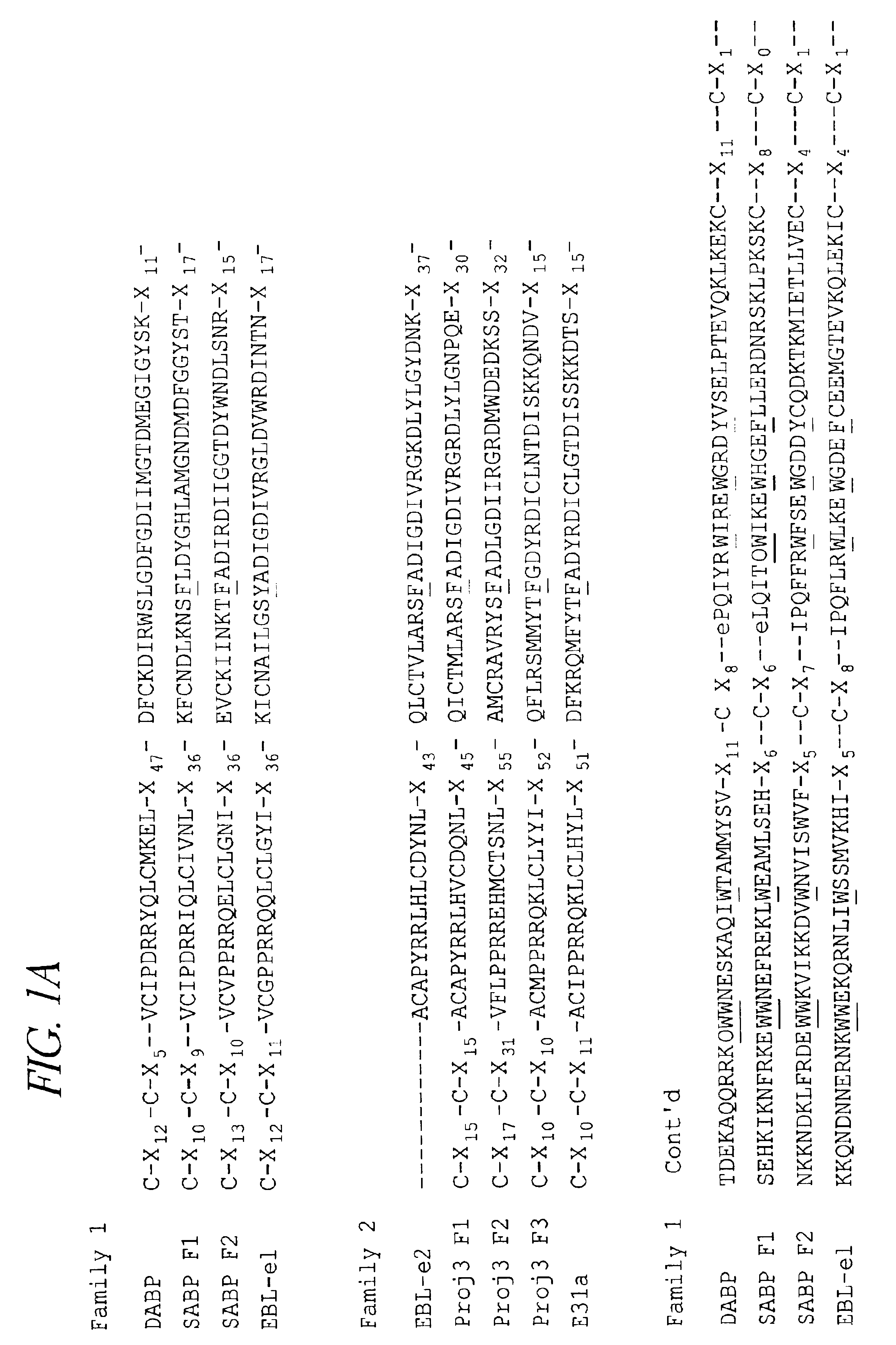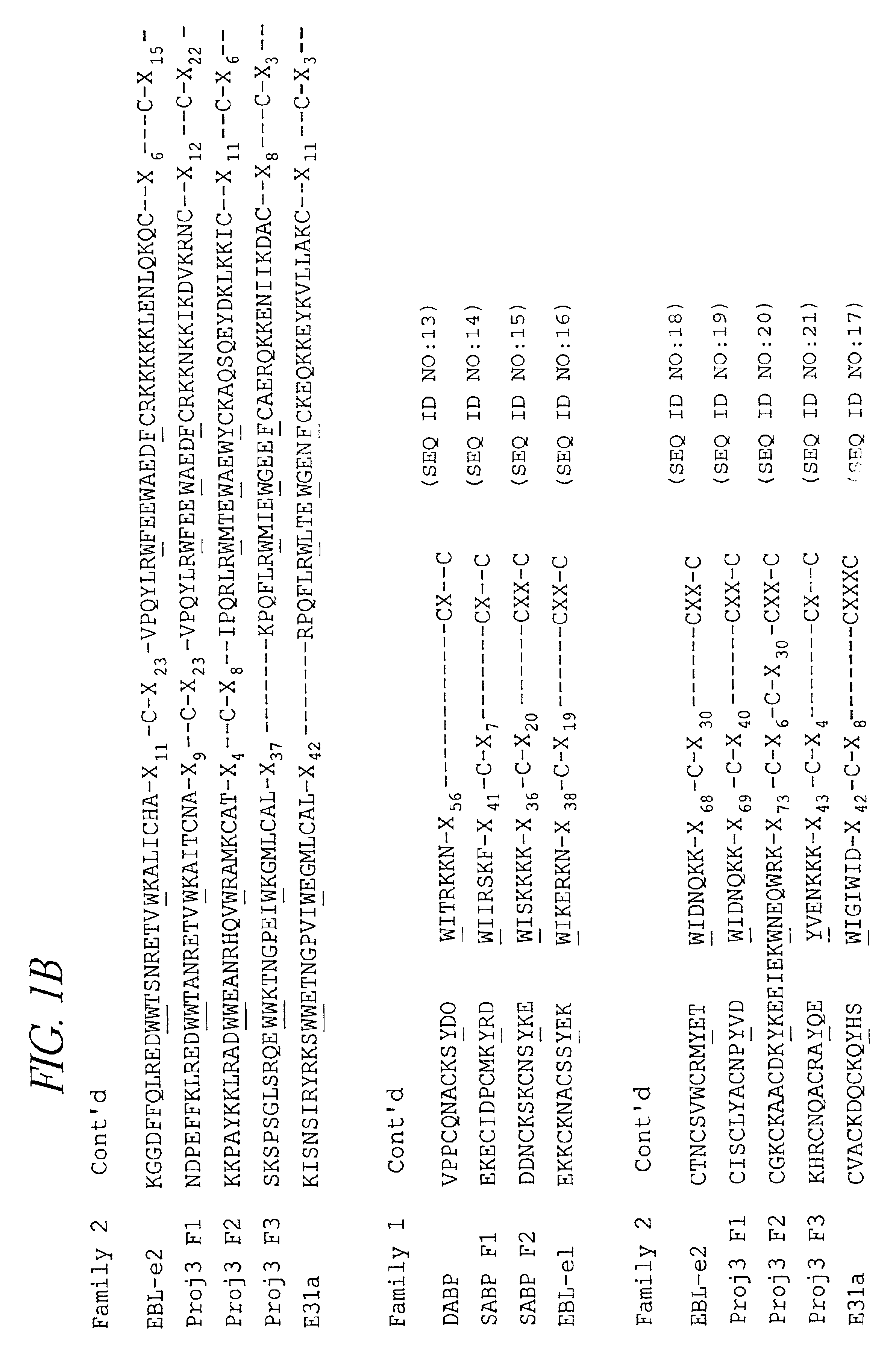Binding domains from Plasmodium vivax and Plasmodium falciparum erythrocyte binding proteins
a technology of erythrocytes and binding domains, which is applied in the field of binding domains of plasmodium vivax and plasmodium falciparum erythrocyte binding proteins, can solve the problems of inability to find a satisfactory solution for preventing or abetailing the blood stage of malaria, and considerable effort expended
- Summary
- Abstract
- Description
- Claims
- Application Information
AI Technical Summary
Benefits of technology
Problems solved by technology
Method used
Image
Examples
example
Identification of the Amino-terminal, Cysteine-rich Region of SABP and DABP as Binding Domains for Erythrocytes
[0118]1. Expression of the SABP Binding Domain Polypeptide on the Surface of Cos cells.
[0119]To demonstrate that the amino-terminal, cysteine-rich region of the SABP protein is the sialic acid binding region, this region of the protein was expressed on the surface of mammalian Cos cells in vitro. This DNA sequence is from position 1 to position 1848 of the SABP DNA sequence (SEQ ID No 3). Polymerase chain reaction technology (PCR) was used to amplify this region of the SABP DNA directly from the cloned gene.
[0120]Sequences corresponding to restriction endonuclease sites for Pvull or Apal were incorporated into the oligonucleotide sequence of the probes used in PCR amplification in order to facilitate insertion of the PCR-amplified regions into the pRE4 vector (see below). The specific oligonucleotides, (SEQ ID NO:34) 5′-ATCGATCAGCTGGGAAGAAATACTTCATCT-3′ and (SEQ ID NO:35) 5...
PUM
 Login to View More
Login to View More Abstract
Description
Claims
Application Information
 Login to View More
Login to View More - R&D
- Intellectual Property
- Life Sciences
- Materials
- Tech Scout
- Unparalleled Data Quality
- Higher Quality Content
- 60% Fewer Hallucinations
Browse by: Latest US Patents, China's latest patents, Technical Efficacy Thesaurus, Application Domain, Technology Topic, Popular Technical Reports.
© 2025 PatSnap. All rights reserved.Legal|Privacy policy|Modern Slavery Act Transparency Statement|Sitemap|About US| Contact US: help@patsnap.com



